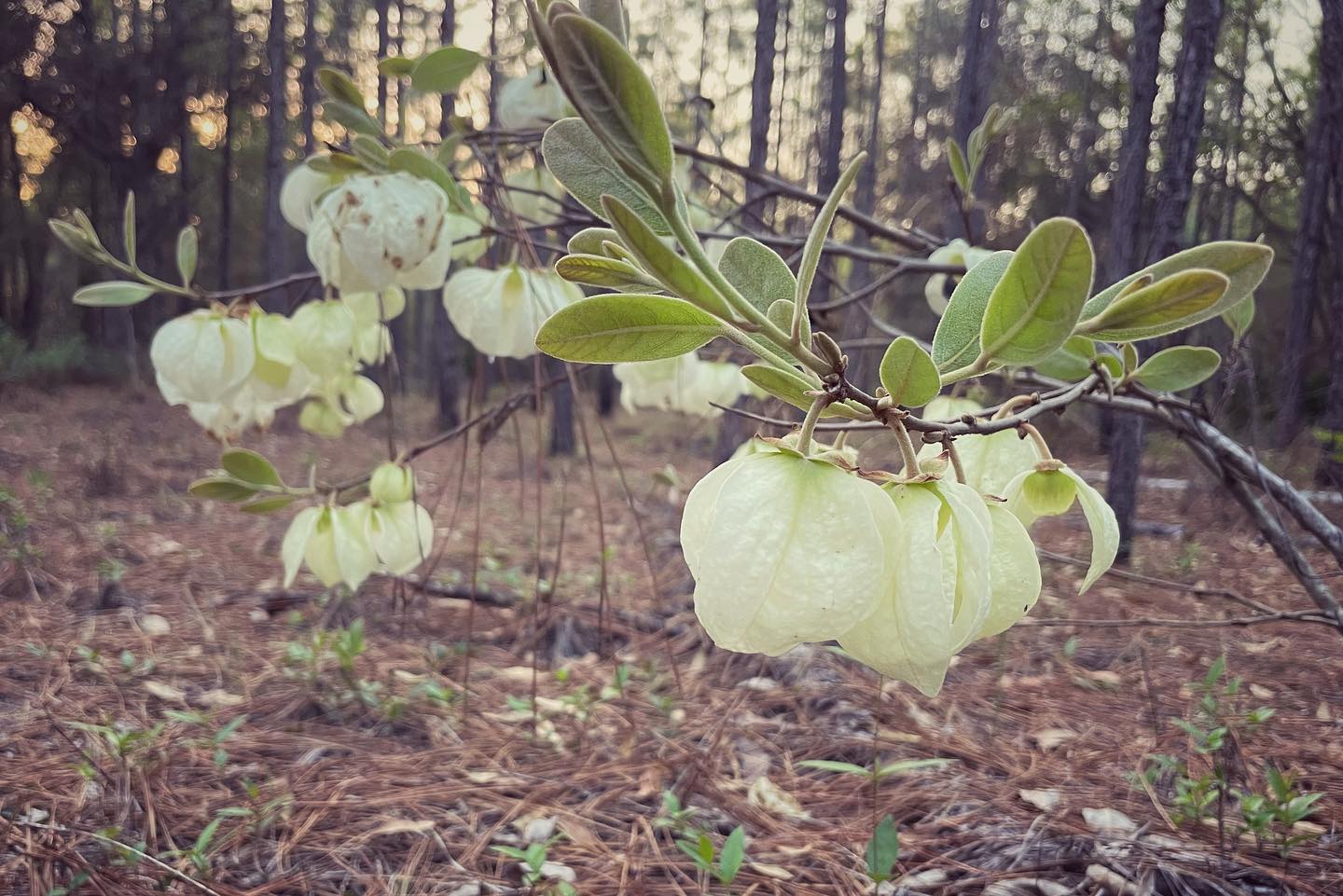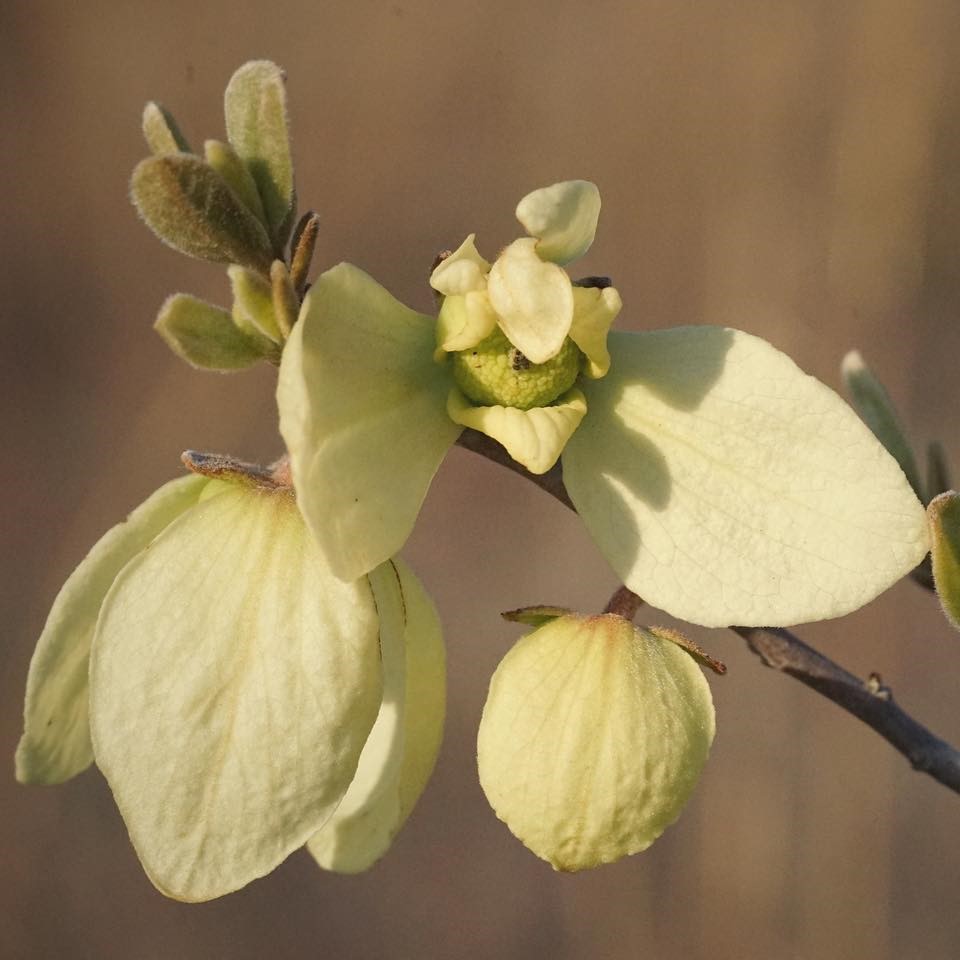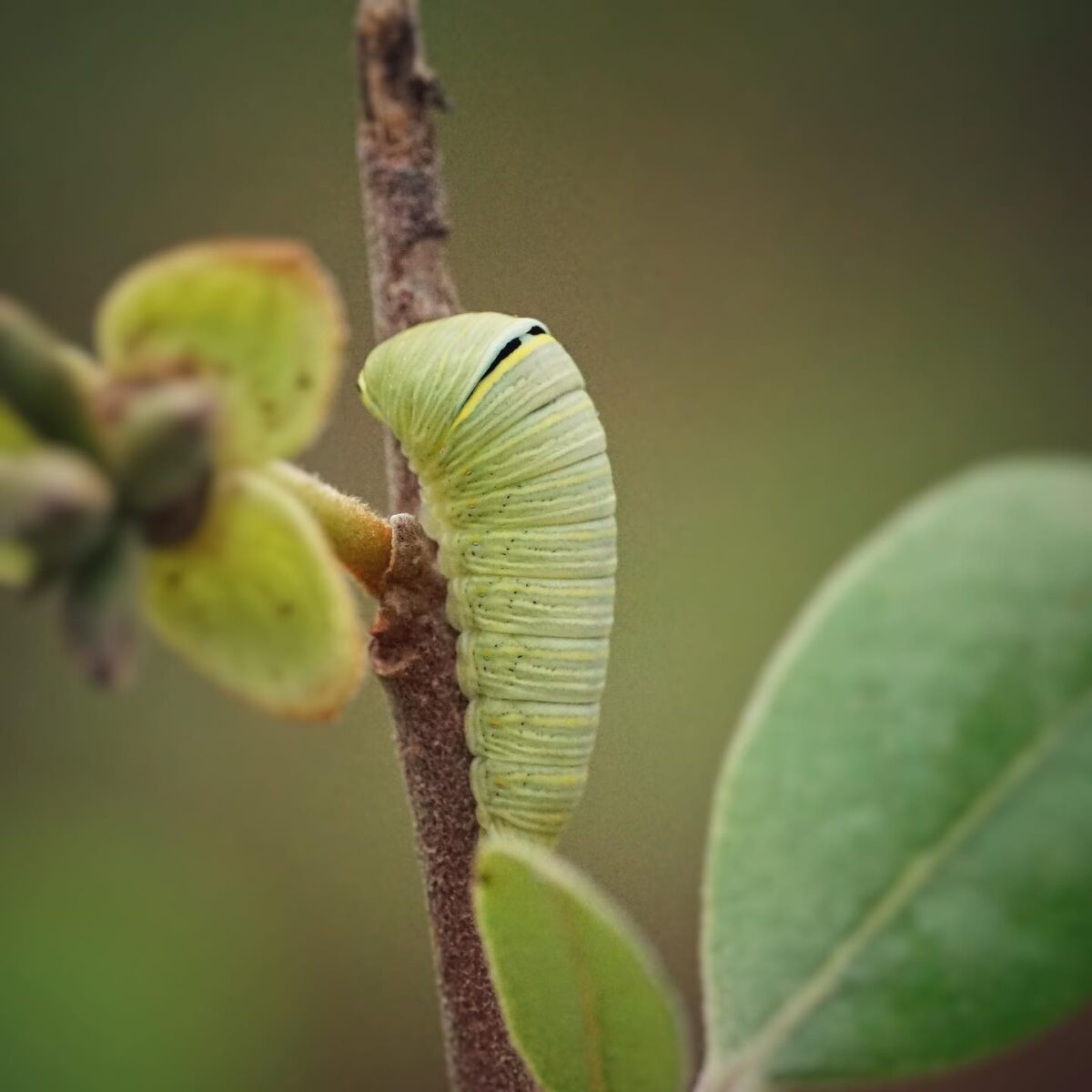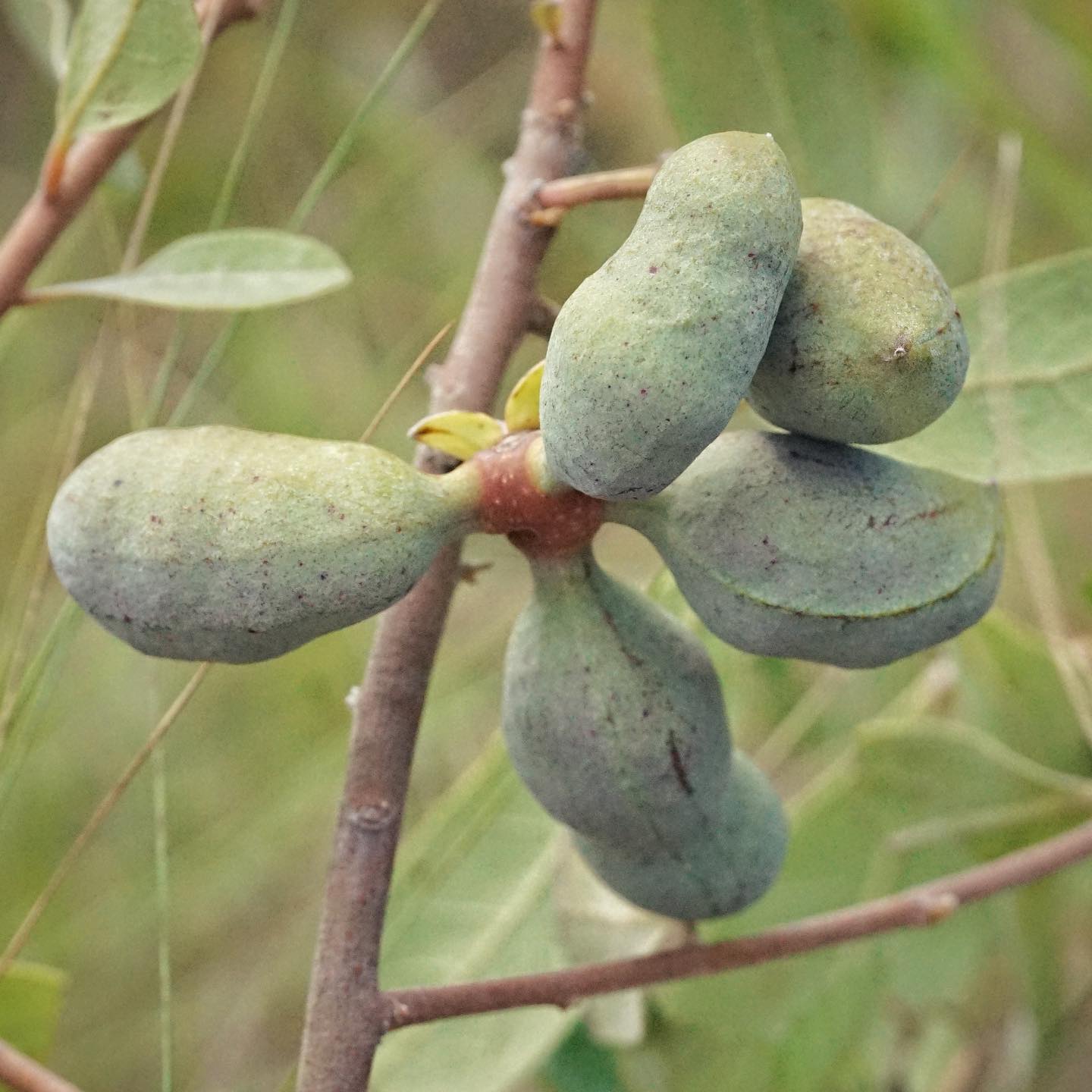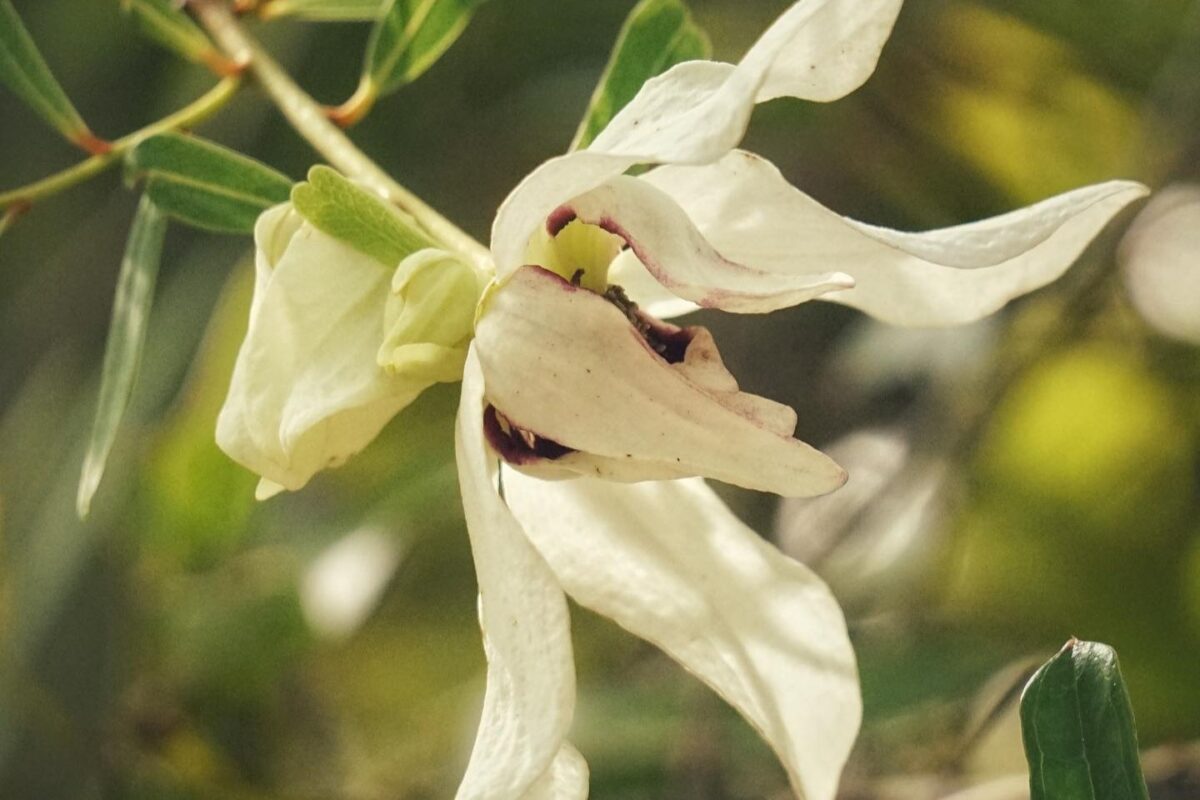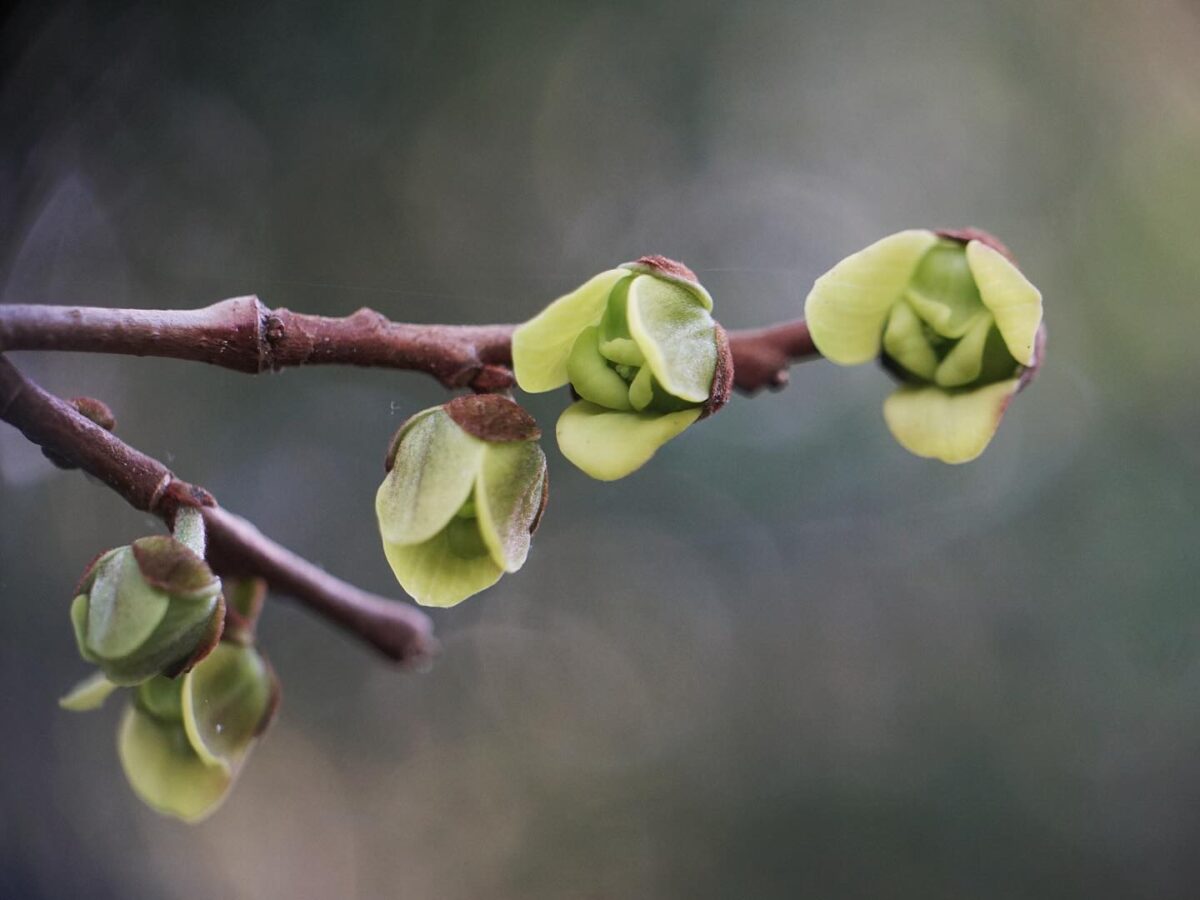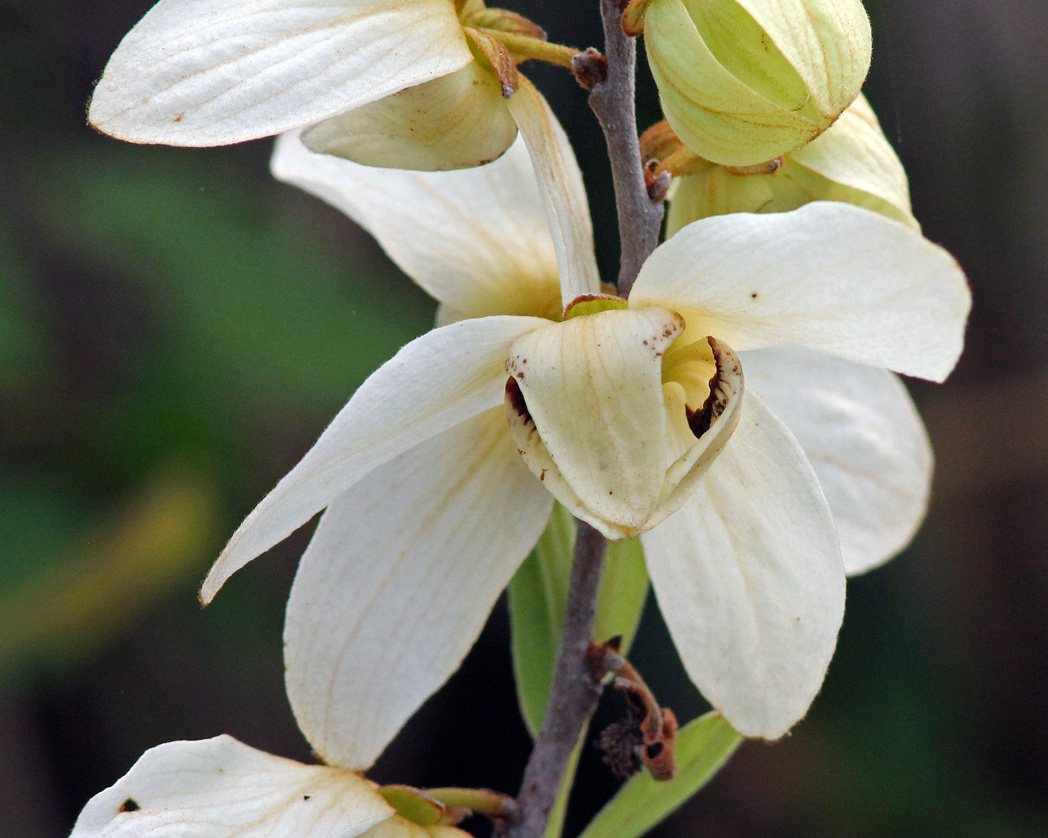Woolly pawpaw
Pictured above: Woolly pawpaw (Asimina incana) by Emily Bell. Click on terms for botanical definitions. View post as a PDF.
Woolly pawpaw (Asimina incana) is a deciduous flowering shrub found in pine flatwoods, scrubby oak ridges, open fields and pastures from southeastern Georgia into North and Central Florida. Other common names include Flag pawpaw and Polecat bush. “Polecat” (aka skunk) refers to the unpleasant smell of its flowers, which has been described as rotting meat. This foul smell attracts its primary pollinators — blowflies and carrion beetles. The plant is a larval host for the Zebra swallowtail butterfly and Pawpaw sphinx moth. The fruits, which ripen in summer through fall, are a favorite of birds and small mammals.
Woolly pawpaw’s showy flowers are creamy white with six petals. The three outer petals are large, rounded and outward spreading. Inner petals are small, fleshy and generally upright or inward pointing. As the common name implies, both its leaves and young stems are densely covered with short soft hairs. The light green tomentose leaves are 2–3 inches long, oblong to obovate and alternately arranged. Fruits are up to 3 inches long and cylindrical. They start out light green and ripen to a dark brown. The plant has a long taproot.
While the fruits are edible for humans, it is hard to beat the wildlife to them and this particular species is not always palatable. According to experienced forager Green Dean, pawpaw fruit should be eaten with caution as some people have an allergic reaction to it. Check out his website for more information on edibility, as well as historical uses of the plant.
Family: Annonaceae (Custard apple or soursop family)
Native range: North Florida with a disjunct population in Central Florida
To see where natural populations of Netted pawpaw have been vouchered, visit florida.plantatlas.usf.edu.
Lifespan: Perennial
Soil: Well-drained sand
Exposure: Full sun to part shade
Growth habit: Up to 6 feet and can be spreading
Propagation: Seed
Florida regions of landscape suitability: North, Central
Garden tips: Woolly pawpaw is suitable for naturalistic landscapes and butterfly gardens in dry sunny areas. It does not transplant well. Although not commonly available from native plant nurseries, it may be grown by enthusiasts.
Learn more about Woolly pawpaw from the Florida Native Plant Society and the Institute for Regional Conservation.
For information on other Asimina species, see these resources:

